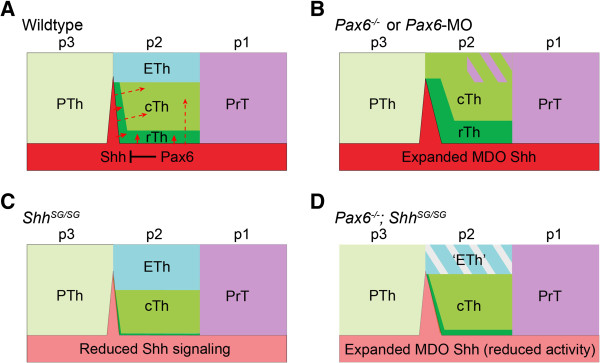Figure 9.

Summary of subdivision of the diencephalon through interactions between Shh and Pax6. (A-D) Schematic representations illustrate the partition of the diencephalon of indicated genotypes. In wildtype embryos (A), Pax6 restricts the expression domain of Shh in the MDO. Strong Shh signaling (arrows) induces rostral thalamus (rTh), while Shh appears to have a long-range effect (dashed line arrows) in inducing caudal thalamus (cTh) and inhibiting epithalamus (ETh). In Pax6 loss-of-function mutants (B), the MDO Shh expression domain is enlarged in mouse and zebrafish embryos, and the formation of the MDO Shh expression is accelerated in the mouse. The enhanced Shh activity causes expanded rTh and cTh and prethalamus (PrT) at the expense of the epithalamus. In embryos with reduced Shh function or gain of function of Pax6 (C), the epithalamic domain is enlarged at the expense of cTh. In Pax6 loss-of-function mutants with reduced Shh activity (D), although the MDO Shh expression is enlarged, the epithalamus is partially restored. PTh, prethalamus; p1-3, prosomeres 1–3.
